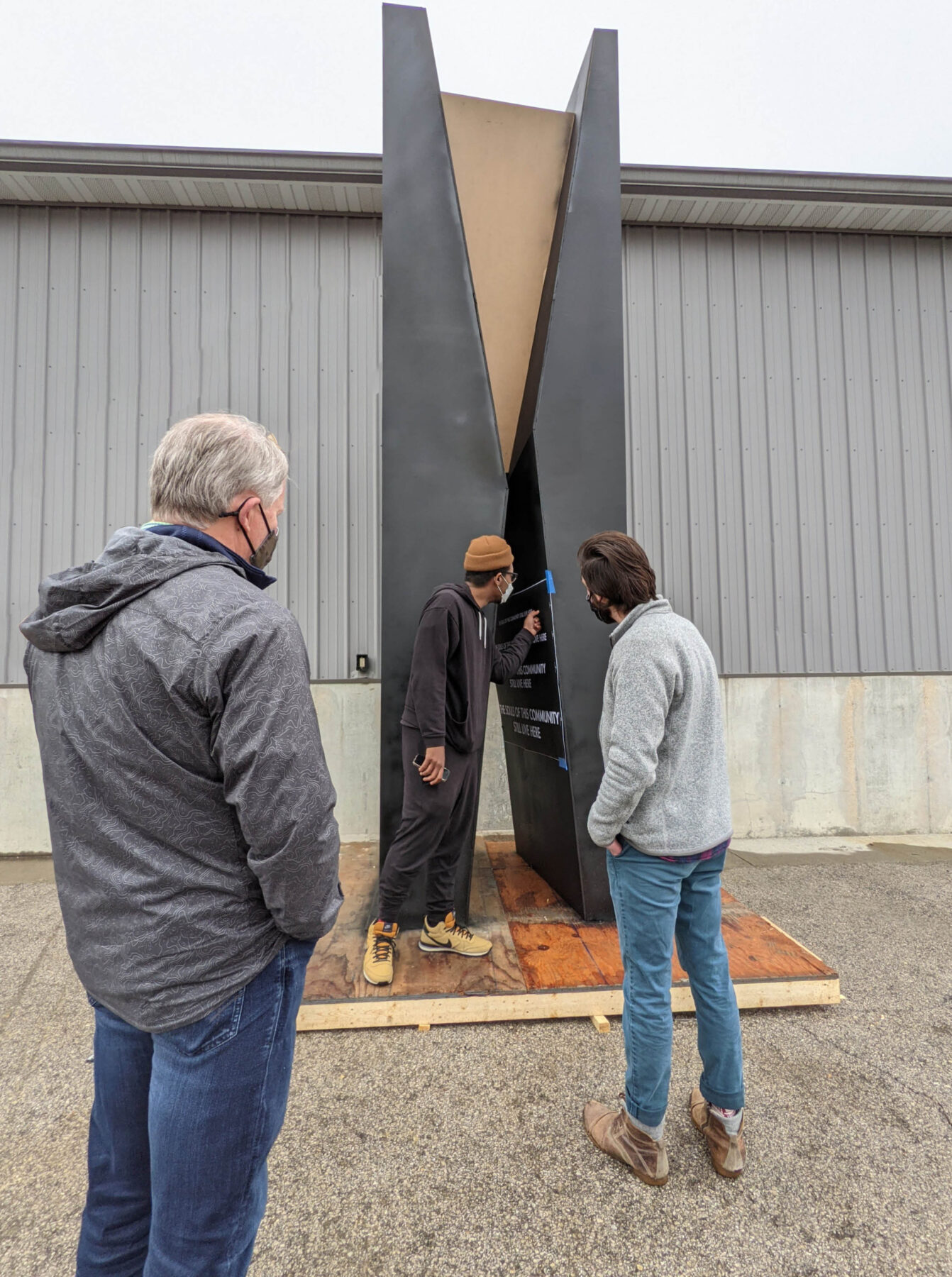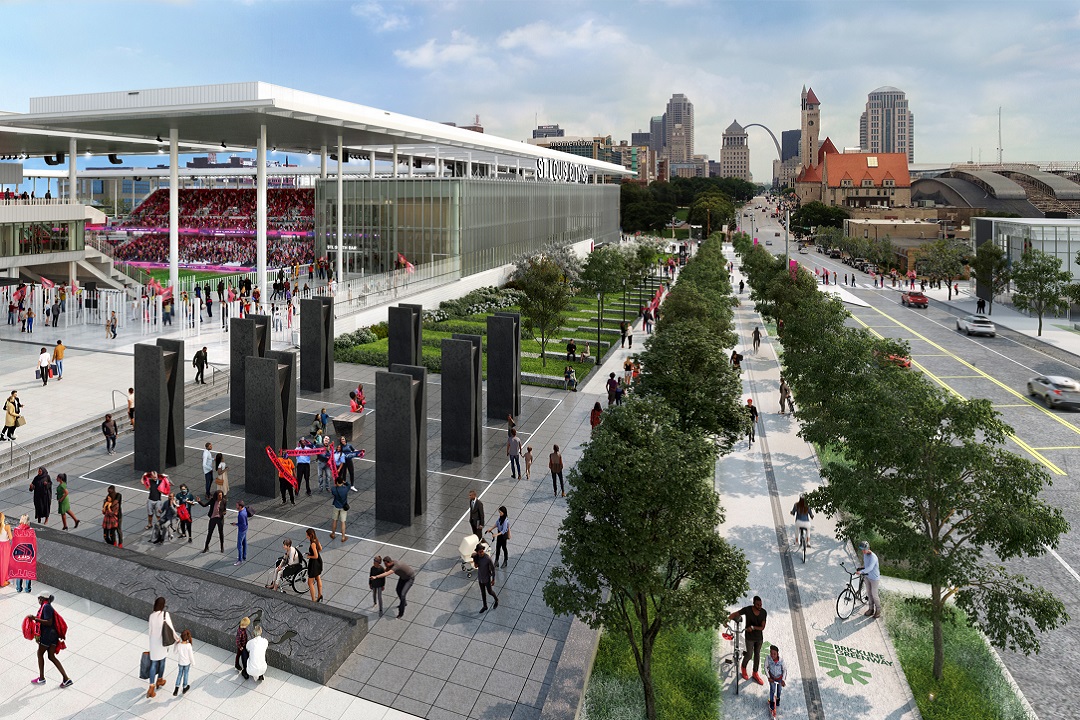If you haven’t heard of the old St. Louis neighborhood of Mill Creek Valley, it’s likely because local officials in the 1950s did their best to erase that part of town. They wanted to eliminate the “slums,” as they referred to the mile-long area in Midtown along Market Street, between 20th Street and Compton. The vast majority of the families were Black and poor.
Wrecking balls came along in 1959 and, one after another, crushed virtually every house, apartment building, store, and warehouse. In their place? A nondescript, uninspired section of Market that to this date is void of any historically significant architecture or, really, any sense of a business district or neighborhood. The demolition also made way for Highway 40, which skirts along the old neighborhood’s southern edge.
Now, this forgotten area that once housed more than 20,000 people, 800 businesses, and 40 churches is the focal point of a project to pay homage to the people and places that called it home.
Great Rivers Greenway is leading a collaborative effort to share the Mill Creek Valley saga through art and storytelling along a 1-mile stretch of the Brickline Greenway that will extend eastward from Harris-Stowe State University to the St. Louis CITY SC Stadium, which is currently under construction.
Nationally-recognized artist Damon Davis, who grew up in East St. Louis and whose art is featured at the Smithsonian’s National Museum of African American History and Culture, was selected in an international competition to create a public art installation to remember Mill Creek Valley and its people.

Artist Damon Davis.
His concept is to create a series of pillars, 10 to 12 feet tall, made of black granite and limestone, each in the shape of an hourglass.
“The universal symbol for time — the hourglass — was my initial inspiration. We’re stopping time, stopping the sand from moving,” Davis said. “We’re excavating time and stories, to tell the history.”
Limestone is indigenous to Missouri and was readily available in Mill Creek Valley when it was first built in the 1800s, Davis said. He also chose limestone to represent the sand in each hourglass, and he wants to “hoist it up high enough for everyone to see.”
Davis said that Mill Creek Valley residents were “erased” when they were forced out of their homes, many with no place to go. “Most people didn’t know they existed,” he said. “We’re validating them by putting them up on pedestals, the pillars. Hopefully, this will be a bit of an amendment to what was done to that neighborhood.”
Monumental Art
Eight pillars will grace the path in front of the soccer stadium, while another 12 or so will be dotted along Market all the way to Harris-Stowe. Interpretive signs and maps, as well as quotes from Mill Creek Valley residents, will help tell the story. The name, age, and occupation of every resident, taken from the 1940 US Census, will be displayed. Rows of hedges and benches will indicate actual placement of former buildings, with their addresses listed.

A Brickline Greenway hourglass monument takes shape.
One of the goals is to stimulate discussions about our city’s past while considering how to build a more inclusive future.
“Everyone who comes to a soccer game or walks to class can engage with the art and displays,” said Emma Klues, vice president of communications at Great Rivers Greenway. “We want the greenway to be a catalyst for learning and connecting.”
The section of the Brickline Greenway at the stadium is expected to be completed in 2023, coinciding with the completion of the stadium, Klues said. The greenway will feature fully separated walking and biking paths in front of the stadium and wherever space allows on the other sections.
At the Harris-Stowe campus, visitors can view some of the only remaining structures from Mill Creek Valley. These include the Henry Givens Administration Building (formerly Vashon High School), renovated Stars Park (former home of the Negro baseball league), and Vashon Community Center, being renovated into the Don and Heide Wolff Jazz Institute and National Black Radio Hall of fame.
“This was one of only four Black-only recreational centers in 1936 segregated St. Louis; it was a source of joy and play, cultural events and community gatherings,” Dr. Terence Finley, vice president and CFO of Harris-Stowe, said in a statement. “This greenway and art project are a natural extension of what we’re doing on campus to connect to and celebrate our collective past.”
Building the Brickline
The segment of Brickline Greenway from Harris-Stowe State University to the St. Louis CITY SC stadium is one part of the overall plan, which proposes up to 20 miles of pathways linking up to 17 neighborhoods and connecting Forest Park, Gateway Arch National Park, Fairground Park, and Tower Grove Park. You can learn more about the project and track its progress at greatriversgreenway.org/brickline/.
Author: Terri Waters is a regular contributor to Terrain Magazine.
Top Image: Rendering of the Brickline Greenway at St. Louis CITY SC stadium.


Leave A Comment